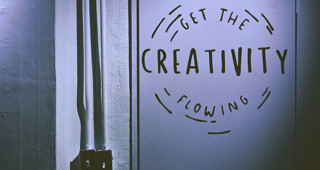Creativity
Curriculum statement: Creativity
The subject of Creativity, now a part of the Saint John Henry Newman’s strand work, is a wonderful opportunity for teachers and students to enjoy the challenges of a new curriculum experience. Across the world, pioneering school leaders are embedding Creativity into their curricula as they reflect on the twenty-first century skills children will need to prepare them for a world that is unknown. We passionately believe that creativity is a mindset that can be taught to and learnt by every child. We believe that creative mindsets can be taught through deliberate, pedagogical strategies that make our students more inquisitive, collaborative, persistent, disciplined and collaborative. In weekly Creativity lessons, students will work on projects that will develop their creative mindsets and key skills that will allow them to adapt to challenges and uncertainty. They will develop into creative thinkers, comfortable with taking risks, failing, and fixing mistakes. This will teach them to be more flexible and resilient in their learning both inside and outside the classroom
We believe that knowledge, skills and capabilities are vital in a fast-changing, increasingly international and complex world. The late Sir Ken Robinson argued that creativity is a new literacy and should be regarded with the same status as English or Maths. Creativity improves outcomes for learners and is associated with improved well-being. It makes learners more employable and is increasingly tested and value internationally. It is increasingly required by national curricula in countries such as Australia, Finland, New Zealand, Scotland and Singapore and is vital in a web-based world. Finally, it is important in life where we are facing plenty of problems which need creative solutions.
Our curriculum is built on the ‘Five Creative Habits of Mind’ developed by leading global Creativity experts Guy Claxton, Bill Lucas and Ellen Spencer at the Centre of Real-Life Learning at the University of Winchester. As a formative assessment tool, it allows our students and staff to develop a shared language of creative, reflect and value their own creative dispositions and to be more self-aware when they are using their creative skills.
The five creative habits of mind are:
1. Inquisitive
Creative individuals are good at uncovering and pursuing interesting and worthwhile questions in their creative domain. They enjoy wondering and questioning, exploring and investigating and challenging assumptions.
2. Imaginative
The ability to come up with imaginative solutions and possibilities is important. Creative pupils enjoy playing with possibilities, making connections and using their intuition.
3. Persistent
Creative students do not give up easily. They see the value of sticking with difficulty, daring to be different and tolerating uncertainty.
4. Collaborative
In today’s world complex challenges require creative collaboration. This requires learners to become confident in sharing whatever product they are developing, giving and receiving feedback and cooperating appropriately.
5. Disciplined
The careful development of expertise is key; creativity is learnable. Pupils work at developing techniques, reflecting critically and crafting and improving whatever they are doing.
Sources
https://arts.wales/sites/default/files/2018-12/Creative_Habits_of_the_Mind.pdf
Lucas, Bill, Spencer, Ellen Teaching Creative Thinking (Crown House Publishing 2017)
What follows is a current summary of the intended subject curriculum content in each year of the key stage. It highlights the key knowledge and skills intended for learning, and some of the ways progress in the curriculum is to be assessed. It clarifies the key questions students should be addressing and gives links to help students and families to develop this learning further.




